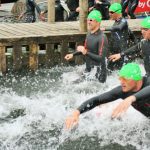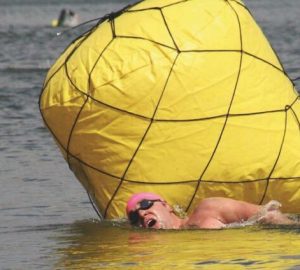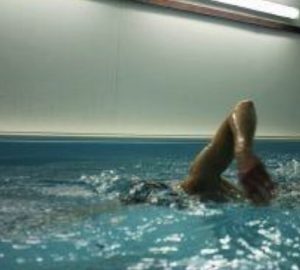Get ready for open-water events with these simple training sessions
Whether you’re doing your first mile this year or stepping up to swimming’s marathon 10k distance, Fiona Ford has got a training plan for you
If you’re preparing for your first open water mile this year, your training will be a little different to what you would do if you were an experienced swimmer aiming to complete a 10km (or longer) marathon. However, the principles are similar.
We have therefore put together a set of training sessions to get you started, whatever distance you’re aiming for.
There are three different sets of sessions for you to follow, depending on your current fitness and your end goal. Just pick the one that best matches your circumstances. We have divided these up as “first mile”, “1-mile to 5km” and “Marathon”. For each of these there are two “endurance” sessions (to improve your ability to swim the distance) and two “pacing” sessions (to help improve your speed).
You should aim to do one endurance session and one pacing session as your key training sessions each week. Include an easier training day (for example, where you Focus on technique and drills) in between them to ensure you can maintain high quality. Complete these sessions twice over a four-week period. For all sessions complete a warm up of around 800m-1200m and cool down of 200m-400m after the main sets.
The great thing about having a swimming goal to aim for is the boost it gives to your motivation. To swim your best later this season, it’s important to be consistent in your training through the early part of the year. Having a weekly structure to follow will help keep motivation levels high, build event specific conditioning and develop a repertoire of open water skills.
For the open water sessions, you may have to adapt to the set-up at your local venue or estimate distances based on swimming time. For example, if the training session is 3 x 500m and the loop length at your venue is 1500m, then estimate roughly where 1/3 and 2/3 of the distance are and take your rests at those points (just float, tread water or switch to easy backstroke or breaststroke). On the other hand, if your lap length is only 400m, then swim the complete lap plus your estimate of a quarter lap. Use buoys or landmarks to help gauge your distance. Similarly, you will have to estimate your pace based on perceived exertion. Remember that if you are wearing a wetsuit, your swim speed may be significantly faster than without. If you can, measure your Critical Swim Speed (CSS – see box for details) in a pool in your wetsuit as well as without. If you have a GPS enabled swimming watch you will be able to check post swim how well you estimated your pacing and distances, but this isn’t essential.
If your venue is not yet open, or the water is too cold for you to complete the full distances, then you can replicate the early sessions in a pool – but try to move to open water as soon as you can.
First mile

These training sessions are suitable for your first event of up to one mile. Aim to swim for 30-45 minutes three times per week and make these your two key sessions. Your third session each week can be a technique focused session or a group or club swim.
1-mile to 5km

These training sessions are suitable if you are targeting swim event distances of 1600m to 5000m. Ideally you are already comfortable swimming for 45- 60 minutes three to five times per week. Make these your key sessions each week. Any other swims can either be technique focused sessions or group or club swims. Try to ensure you’re rested before these key sessions.
Marathon

The marathon plan is for experienced open water swimmers targeting 10km swim events. Swimmers would already be comfortably swimming 10 to 15km per week in training, for at least the past 4 to 8 weeks. Make these your key sessions each week. Any other swims can either be technique focused sessions or group or club swims. Try to ensure you’re rested before these key sessions.
Critical Swim Speed and Endurance Pace
Critical Swim Speed or CSS is a concept used by swimming coaches around the world as a basis for determining what speed you should aim to swim at during key training sessions. It is roughly equivalent to the fastest pace you can sustain for a continuous 1500m swim. It is usually measured as your time per 100m, so if it takes you 26m15s to swim 1500m your CSS would be 1m45s per 100m. You can measure your CSS by doing 400m and 200m timed swims.
For more details and a CSS calculator, see: swimsmooth.com/training.html
For the purpose of the training sessions here, calculate your endurance pace by adding 3 to 5 seconds per 100m – so if your CSS is 1m45s, your endurance pace is 1m48s to 1m50s. Aim to swim at this pace during the endurance sessions.
Triathlon Europe provides weekly Swim Smooth squad training in South West London. The squad enjoy training all year round in fabulous indoor and outdoor 33m pools. Fiona offers swim training plans, 1-2-1 video analysis sessions, stroke correction sessions, and Swim Smooth workshops.
Find out more: triathloneurope.com







